What is a sistrum used for?
A sistrum is an ancient Egyptian percussion instrument that was shaken during religious ceremonies and when coming into the presence of a deity.
How is a sistrum played?
Played by shaking
the instrument like a rattle, moveable objects on the horizontal bars
or the free movement of the bars themselves against the frame,
produced sounds. Originally from Egypt and first seen in the Old
Kingdom, the instrument was closely associated with ritual rites in
honour of Isis
What is a Sistra?
or
sistra. -rə : an ancient Egyptian and Roman percussion instrument
sacred to the goddesses Hathor and Isis consisting usually of a handle
attached to a small metal strip bent into an oblong loop with holes for
three or four loose metal rods that jingle when shaken.
The sistrum was one of the most sacred musical instruments in ancient
Egypt and was believed to hold powerful magical properties. It was used
in the worship of the goddess Hathor, mythological character of joy,
festivity, fertility, eroticism and dance. It was also shaken to avert
the flooding of the Nile and to frighten away Seth, the god of the
desert, storms, disorder, and violence. Isis, in her role as mother and
creator, was often depicted holding a pail symbolizing the inundation of
the Nile in one hand, and the sistrum in the other hand. It was
designed to produce the sound of the breeze hitting and blowing through
papyrus reeds, but the symbolic value of the sistrum far exceeded its
importance as a musical instrument.
Ancient Greek historian, Plutarch, speaks of the powerful role of the sistrum in his essay, “On Isis & Osiris”:
“The sistrum makes it clear that all
things in existence need to be shaken, or rattled about, and never to
cease from motion but, as it were, to be waked up and agitated when they
grow drowsy and torpid. They say that they avert and repel Typhon by
means of the sistrums, indicating thereby that when destruction
constricts and checks Nature, generation releases and arouses it by
means of motion.” (Plutarch, Moralia, Book 5, “On Isis & Osiris,”
section 63)
The sistrum consists of a handle and frame made from brass, bronze,
wood, or clay. When shaken the small rings or loops of thin metal on its
movable crossbars produced a sound that ranged from a soft rattle to a
loud jangling. Its basic shape resembled the ankh, the Egyptian symbol
of life, and carried that hieroglyph's meaning. Archaeological records
have revealed two distinct types of sistrum.
A sistrum (plural: sistra or Latin sistra;[1] from the Greek σεῖστρον seistron of the same meaning; literally "that which is being shaken", from σείειν seiein, "to shake"[2][3][4]) is a musical instrument of the percussion family, chiefly associated with ancient Egypt.
It consists of a handle and a U-shaped metal frame, made of brass or
bronze and between 30 and 76 cm in width. When shaken, the small rings
or loops of thin metal on its movable crossbars produce a sound that can
be from a soft clank to a loud jangling. Its name in the ancient Egyptian language was sekhem (sḫm) and sesheshet (sššt).
Sekhem is the simpler, hoop-like sistrum, while sesheshet (an onomatopoeic word) is the naos-shaped one. The modern day West African disc rattle instrument is also called a sistrum
Egyptian sistrum
The sistrum was a sacred instrument in ancient Egypt. Perhaps originating in the worship of Bat, it was used in dances and religious ceremonies, particularly in the worship of the goddess Hathor, with the U-shape of the sistrum's handle and frame seen as resembling the face and horns of the cow goddess.It also was shaken to avert the flooding of the Nile and to frighten away Set.
Isis in her role as mother and creator was depicted holding a pail, symbolizing the flooding of the Nile, in one hand and a sistrum in the other.[8] The goddess Bast often is depicted holding a sistrum also, with it symbolizing her role as a goddess of dance, joy, and festivity.[
Sistra are still used in the Alexandrian Rite and Ethiopic Rite. Besides the depiction in Egyptian art with dancing and expressions of joy, the sistrum was also mentioned in Egyptian literature.The hieroglyph for the sistrum is shown.
The sistrum continued to be used in Egypt well after the rule of the
pharaohs. Rome's conquest of Egypt in 30 BC, following the death of
Cleopatra and Mark Antony, helped spread the cult of the goddess
throughout the Mediterranean and the rest of the Roman world. The Hathor
heads were interpreted as Isis and Nephthys, who represented life and
death respectively.
Worship of the goddess Isis became extremely popular in the
Greco-Roman period and during this time, the sistrum became inextricably
tied to Isis. Temples to Isis were built in every major city, perhaps
the largest and most richly decorated being in Rome, near the Pantheon.
The temple and its surrounding porticoes were decorated with beautiful
wall paintings, some of which show priests or attendants of Isis holding
a sistrum.
In
Greek culture, not all sistrums were intended to be played. Rather,
they took on a purely symbolic function in which they were used in
sacrifices, festivals, and funerary contexts. Clay versions of sistrums
may also have been used as children’s toys.
Minoan sistrum
The ancient Minoans also usthe sistrum, and a number of examples made of local clay have been found on the island of Crete. Five of these are displayed at the Archaeological Museum of Agios Nikolaos. A sistrum is also depicted on the Harvester Vase, an artifact found at the site of Hagia Triada.
Researchers are not sure yet if the clay sistra were actual
instruments that were used to provide music, or instead were models with
only symbolic significance. But, experiments with a ceramic replica
show that a satisfactory clacking sound is produced by such a design in
clay, so a use in rituals is probably to be preferred.[12]
The sistrum today
The senasel (sistrum) remained a liturgical instrument in the Ethiopian Orthodox Church throughout the centuries and is played today during the dance performed by the debtera (cantors) on important church festivals. It is also occasionally found in Neopagan worship and ritual.
The sistrum was occasionally revived in 19th century Western orchestral music, appearing most prominently in Act 1 of the opera Les Troyens (1856–1858) by the French composer Hector Berlioz. Nowadays, however, it is replaced by its close modern equivalent, the tambourine.
The effect produced by the sistrum in music – when shaken in short,
sharp, rhythmic pulses – is to arouse movement and activity. The
rhythmical shaking of the sistrum, like the tambourine, is associated
with religious or ecstatic events, whether shaken as a sacred rattle in
the worship of Hathor of ancient Egypt, or in the strident jangling of
the tambourine in modern-day Evangelicalism, in Romani song and dance, on stage at a rock concert, or to heighten a large-scale orchestral tutti.
Classical composer Hans Werner Henze (1926–2012) calls for the flautist to play two sistra in his 1988 work Sonate für sechs Spieler (Sonata for six players).
West Africa
Various modern West African and Gabon rattle instruments are also called
sistra (plural of
sistrum):
the calabash sistrum, the West Africa sistrum or disc rattle (n'goso
m'bara) also called Wasamba or Wassahouba rattle. It typically consists
of a V-shaped branch with some or many concave calabash discs attached,
which can be decorated.



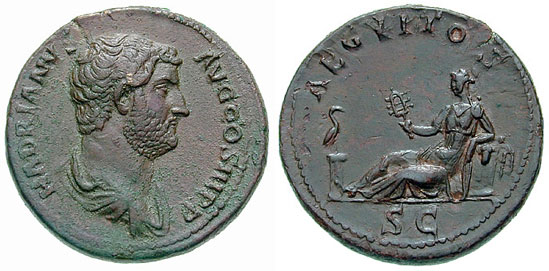

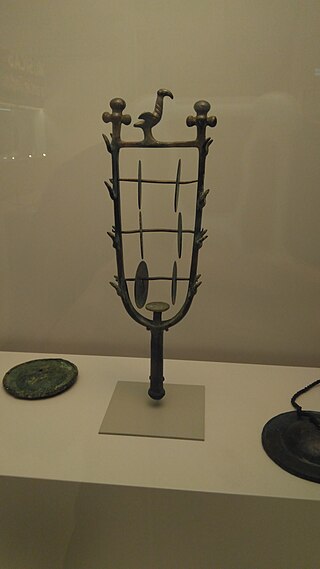




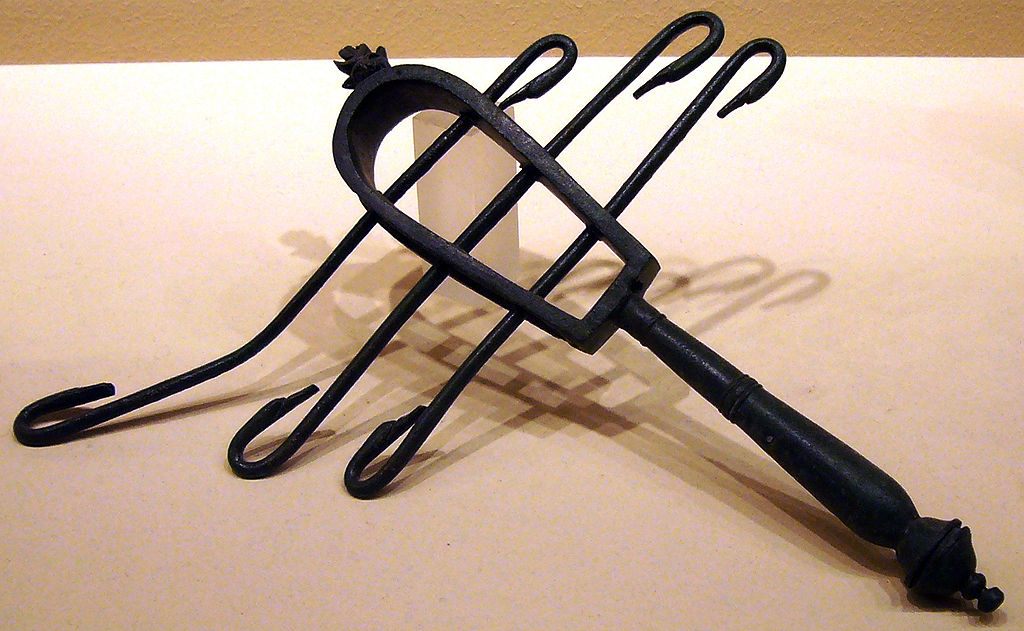
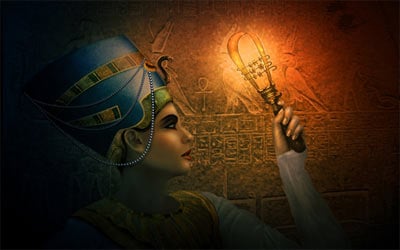
Here is another explanation that I found about Sistrum
The Sistrum is not a musical instrument. The Greek σεῖστρον seistron; literally means "that which is being shaken" - Not meaning that which you must shake, but that which is being shaken (obviously) by electric field conditions due to the metallic rods and high energy electric events that can happen on the Earth.
Plutarch said, "that the shaking of the four bars within the circular apsis indicated the agitation of the four elements (water/sea, air, ground, fire) within the magnetic field or compass of the world, by which all things are continually destroyed and reproduced."
The Sistrum is therefore a receiver or detector of the Electric Field conditions that drive climatic systems on the Earth, such as large storms, earthquakes and volcanoes.
Hathor as the 'Strong Electric Field Enclosure', is shown supporting the Sistrum and Nephthys was said to be the home of the Sistrum,
Nephthys defining the capacitor action and the creation of an Electric Field that the Sistrum reacts to. The device was not shaken to scare off Set, but rather the 'agitation' of the metalic bars detected the presence of Set, as he influences electric field conditions.
As the Snake ejects from Ra (e.g. Coronal Mass Ejection), the sun charges the plasmasphere, releasing charge from Set causing the Sistrum to rattle and shake as a precursor warning to a electrically induced natural disaster or large weather system.
The Greek documentation of the Sistrum is therefore evidence that the Sun Earth relationship has been known and crudely understood by civilizations thousands of years before our time.
link
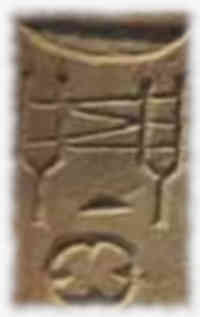
(Left) Attracting Negative Charge to Anode Core via Resonance : (right) Tuning Forks
[Resonance / Attraction] Tuning Fork
Traditionally seen as the ships mast, explains how charge is transferred to stars. For further information see
Anubis.













 (Left) Attracting Negative Charge to Anode Core via Resonance : (right) Tuning Forks
(Left) Attracting Negative Charge to Anode Core via Resonance : (right) Tuning Forks
































